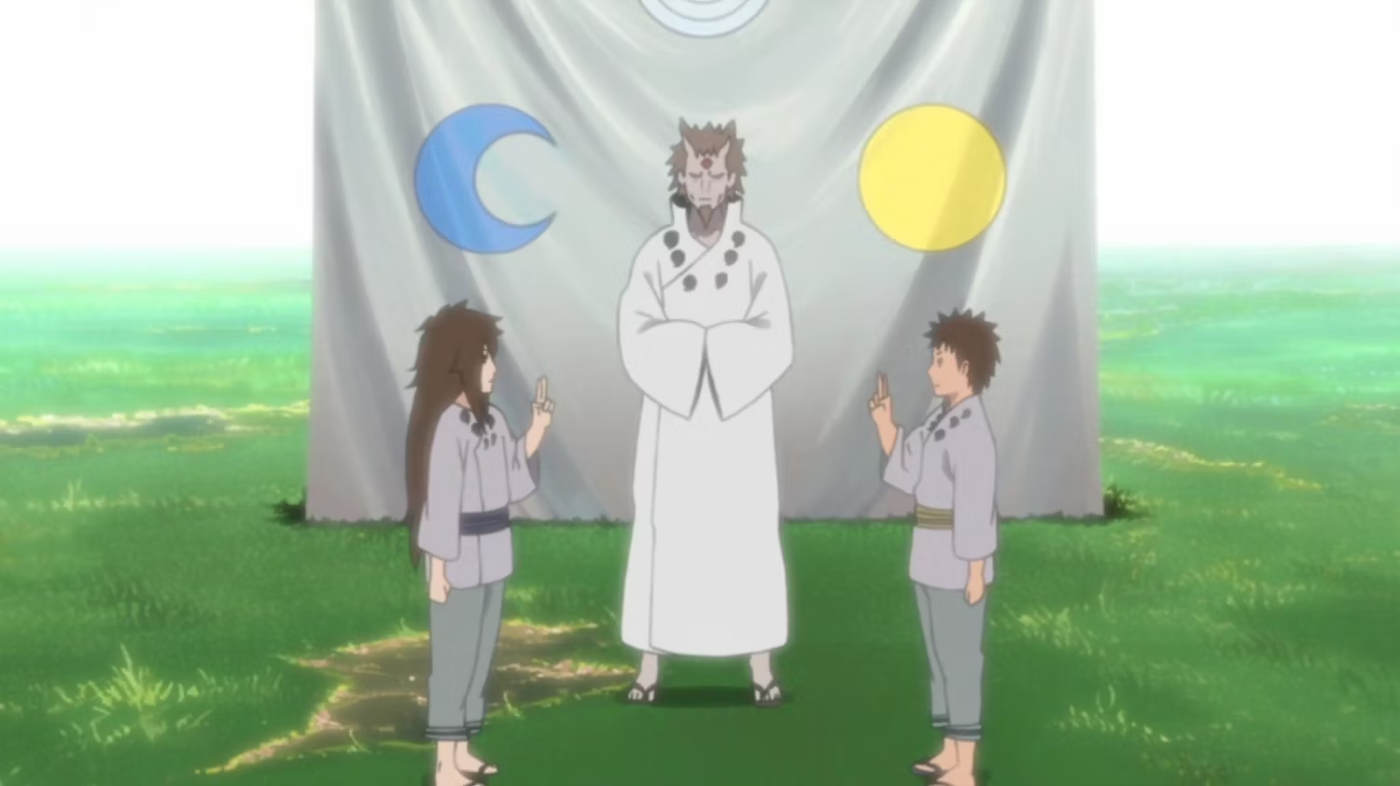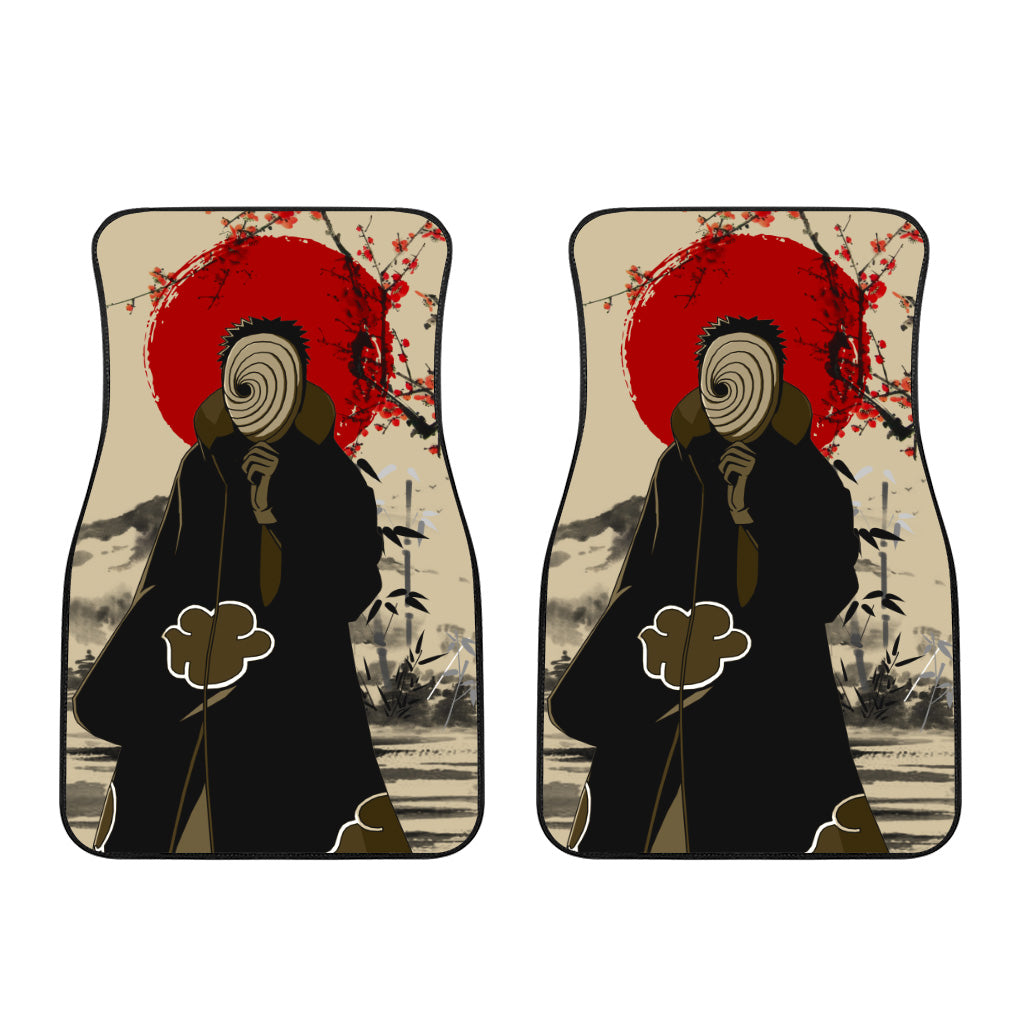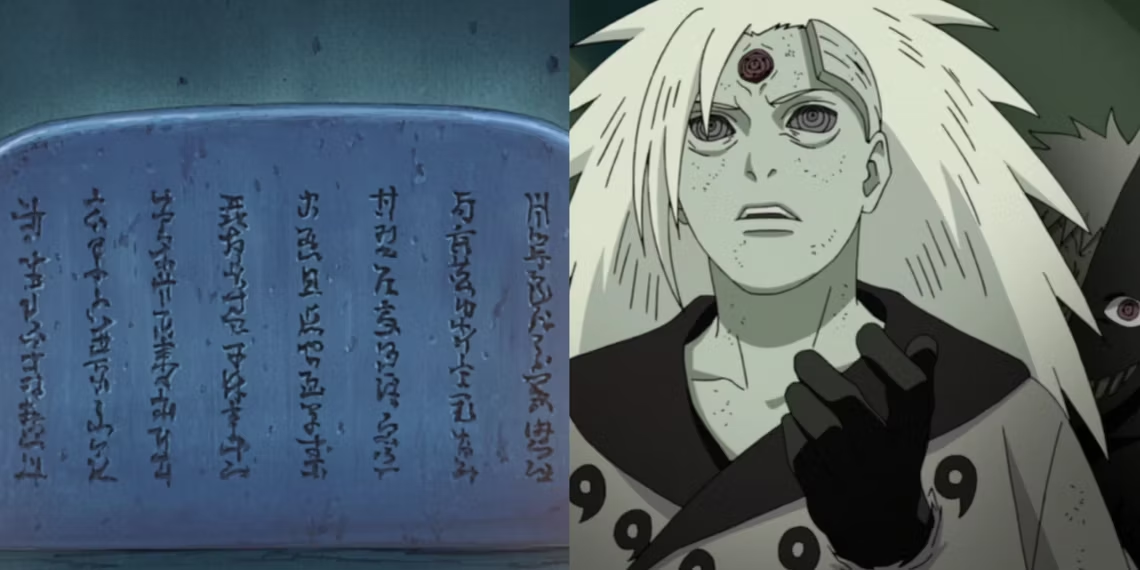“The Uchiha Stone Tablet: An Ill-Conceived Retcon in Naruto’s Narrative”
The Uchiha Stone Tablet, a revered artifact within the world of Naruto, held a pivotal role in shaping the series’ storyline. It served as the origin of Madara Uchiha’s Eye of the Moon plan, which aimed to bring about a lasting peace through the implementation of the Infinite Tsukuyomi. However, the sudden alteration of the tablet by Black Zetsu to revive Kaguya Otsutsuki introduced an unexpected and questionable twist that left fans disappointed.
Originally created by Hagoromo Otsutsuki, also known as the Sage of Six Paths, the Uchiha Stone Tablet was crafted as a means to preserve harmony within the Uchiha clan and the broader shinobi world they inhabited. Hidden within the Naka Shrine in Konohagakure, the tablet remained concealed within the clan’s secret meeting room, accessible only by locating the seventh tatami mat and descending to the space below. This sacred monument held a wealth of knowledge, believed to be a comprehensive record of the shinobi world’s history.
Throughout the Naruto series, it was repeatedly emphasized that the tablet’s text could only be deciphered by individuals with specific dojutsu abilities. The Sharingan and its advanced form, the Mangekyo Sharingan, granted partial access to the tablet’s contents, but it was the possession of the Rinnegan that allowed for a complete understanding. This exclusivity and the tablet’s clandestine nature underscored its immense significance, making it a central element in the overarching narrative.

Madara Uchiha, driven by his ambition and guided by his interpretation of the tablet, firmly believed that triggering the Infinite Tsukuyomi, as outlined within its inscriptions, would lead to a lasting peace in the shinobi world. Being one of the few individuals capable of comprehending the tablet in its entirety due to his possession of both the Rinnegan and the Eternal Mangekyo Sharingan, Madara dedicated himself to fulfilling this vision.
However, the flaw in this narrative comes into play with the sudden reveal that Black Zetsu, a manipulative entity serving Kaguya Otsutsuki, had tampered with the tablet’s contents. The lack of foreshadowing or hints regarding this alteration felt jarring and contrived. It was as if this crucial plot point, which played a significant role in introducing Kaguya as the final antagonist, was conveniently introduced as a retcon to sideline Madara and pave the way for her emergence.
The history of the Uchiha Stone Tablet reveals its deep-rooted connection to the clan’s legacy and the broader context of the shinobi world. After Hagoromo Otsutsuki created the tablet and imparted his knowledge of Ninshu, an ancient form of spiritual teaching, to his followers, it fell into the hands of the Uchiha clan. As descendants of Hagoromo’s son, Indra Otsutsuki, the Uchiha clan inherited the powerful Sharingan and became one of the most formidable clans during the turbulent Warring States period.

The Uchiha cherished the stone tablet as a sacred relic, safeguarding its secrets and ensuring its preservation for generations to come. It contained information about the Mangekyo Sharingan, its acquisition, and its role in controlling tailed beasts. Additionally, the tablet chronicled the history of Kaguya Otsutsuki, the origin of the God Tree, and the legacy of the Sage of Six Paths. It also provided crucial warnings about the dangers of the Infinite Tsukuyomi and divulged some of the Uchiha clan’s closely guarded secrets, including details about Madara Uchiha’s unique body.
Initially, only fragments of the tablet’s text were deciphered, even by the most skilled Uchiha members who had awakened the Sharingan. The full scope of its content remained elusive, reserved for those who possessed the rare and powerful Rinnegan. This alignment with Hagoromo’s original intent of using the tablet as a deterrent against Kaguya’s resurrection emphasized its significance in warning future generations about the perils of the Infinite Tsukuyomi and the God Tree.
Madara Uchiha, alongside his childhood friend Hashirama Senju, the future First Hokage, founded Konohagakure and became one of its leaders during the Warring States Period. Utilizing Hashirama’s DNA, Madara awakened the Rinnegan by merging the chakra of Asura and Indra, the descendants of Hagoromo’s sons. When their relationship soured, leading to a fateful clash at the Valley of the End, Madara faked his death and embarked on a lifelong mission to bring his Eye of the Moon plan to fruition.

Passing on his mission to Obito Uchiha, who posed as Madara while manipulating the Akatsuki, the organization turned from a peaceful ideal into a gathering of rogue ninja tasked with capturing the nine tailed beasts required for reviving the Ten-Tails. Madara believed that by entrapping all life on Earth within an unending genjutsu, he would end all conflict and usher in an era of peace. Unbeknownst to him, this plan would bind humanity to the God Tree, siphoning their chakra to create a chakra fruit.
Madara’s journey to achieve his grand plan was fraught with obstacles. Despite successfully reincarnating himself and becoming the Ten-Tails jinchuriki, he was hindered by Obito’s intervention through the Summoning: Impure World Reincarnation jutsu and the absorption of the Ten-Tails’ power. In an unexpected turn of events, Madara’s revival was forcefully transformed into the emergence of Kaguya through the treacherous actions of Black Zetsu.
This sudden twist in the story not only shattered the hopes of a climactic final confrontation with Madara, who had been meticulously built up as the series’ primary antagonist, but also raised several inconsistencies and conveniences surrounding the revised tablet’s text. Firstly, the fact that Black Zetsu, lacking the necessary dojutsu, could read and alter the tablet’s content was questionable. Secondly, it seemed implausible that Madara, an extraordinarily intelligent and powerful shinobi, failed to notice the tampering with the tablet. Lastly, the ease with which Madara transformed into Kaguya, utilizing the Ten-Tails’ chakra, appeared overly convenient and underserved the complexity of his character. These aspects of the plot revision undermined the earlier, well-developed parts of Naruto and sparked ongoing debates among fans regarding the series’ conclusion.
In conclusion, the Uchiha Stone Tablet played a significant role in Naruto, serving as the foundation for Madara Uchiha’s Eye of the Moon plan. However, the sudden retcon of the tablet’s contents by Black Zetsu to resurrect Kaguya introduced an ill-conceived twist that lacked proper setup and undermined the narrative’s integrity. The inconsistencies surrounding this alteration and the sidelining of a compelling antagonist like Madara raised valid concerns about the series’ conclusion and left fans longing for a more satisfying resolution.
We bring out some of the most well-known Naruto collection, all of which are available at reasonable costs. Visit our link now if you are interested in the Naruto collection
Naruto Car Floor Mats, Akatsuki Car Floor Mats, Obito Uchiha Car Mats, Naruto Anime Car Accessories
Naruto Car Floor Mats, Akatsuki Car Floor Mats, Pain Naruto Car Floor Mats, Naruto Car Accessories


Shikamaru, Konohamaru, Sai, Kakashi, Kabuto

